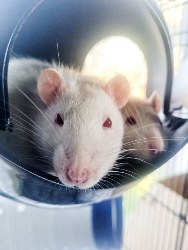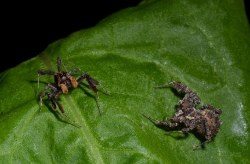Waikato modelling results show high costs to farmers
Waikato modelling results show high costs to farmers and region
Thursday 24 September, 2015
For
immediate release
DairyNZ is encouraging Waikato dairy farmers to get involved in regional policy development processes after the release of new information highlighting the potential for high costs to their businesses.
Commenting on new modelling released<http://www.waikatoregion.govt.nz/Community/Whats-happening/News/Media-releases/Models-look-at-potentially-very-large-costs-of-improving-water-quality/> today by a group of technical experts, DairyNZ's strategy and investment leader for productivity, Bruce Thorrold says the analysis shows there is potentially a very high economic and community cost to the region of changing land use and management practices. Estimates range from $1.2 billion to $7.8 billion depending on the degree of improvement in water quality modelled.
"That's not surprising given the size and importance of the pastoral industry in the Waikato," he says.
He says the modelling is useful in terms of understanding the economic and community impact of achieving the region's vision for water quality. "There is a lot more work to be done before the best way forward is clear, in terms of what are fair and equitable land and water planning rules and policies for the Waikato," he says.
A Technical Leaders Group, chaired by NIWA's Dr Bryce Cooper, did the new modelling for the Collaborative Stakeholder Group. This is a multi-stakeholder group including farmer representatives. It has been set up by the Waikato Regional Council as part of the Healthy Rivers: Plan for Change process.
The results of the modelling will be used by the Collaborative Stakeholder Group to develop a recommended plan change which is due to be put before the Waikato Regional Council and river iwi partners next year as part of its decision-making on a new regional plan.
"It's certainly early days yet in terms of what rules and regulations will be finally approved and how these will affect farmers. We're comfortable with the process so far and have been involved alongside our farmer representatives in the Collaborative Stakeholder Group.
"We will be running meetings in the coming weeks to give farmers the opportunity to raise any issues we have to consider. Now is the time for dairy farmers to engage because they will ultimately be the ones who have to farm under any new rules. The results of this long process will impact the way they farm for many years to come."
Bruce says farmers will need time to adapt their farming systems following any changes in regulation.
"Timelines to achieve water quality targets have to be realistic because we will need to invest in research to drive the innovation that will make these changes affordable. That scale of research requires years, if not decades. You can't turn around a 150 years of land use, farming and management practices in a just a few years - that would cost billions."
Dairy farmers have already made a lot of changes to improve their environmental performance including meeting commitments under the Sustainable Dairying: Water Accord to exclude stock from waterways.
"We have also been implementing programmes like the voluntary Sustainable Milk Plans that help farmers identify ways to reduce their environmental footprint and contribute to the health of the rivers. We have produced regional riparian and land management guides. In the Upper Waikato 642 farms have completed a Sustainable Milk Plan and committed to more than 5900 actions around effluent, waterways, nutrients, land and water use.
"Another 800 farmers in the Waipa River catchments are now being offered free support to develop Sustainable Milk Plans. The aims of the project are to speed up adoption of good environmental practice, improve water quality and to prepare farmers for future regulations.
"We will also be launching a Waikato Wetlands Showcase project in October that will test practical ways of using constructed wetlands to manage nutrient run-offs from dairy farms," he says.
"We've acknowledged as an industry that practices need to change to lower our environmental impact on waterways - a lot has already happened and will continue to happen."
ENDS-


 Business Canterbury: Urges Council To Cut Costs, Not Ambition For City
Business Canterbury: Urges Council To Cut Costs, Not Ambition For City Wellington Airport: On Track For Net Zero Emissions By 2028
Wellington Airport: On Track For Net Zero Emissions By 2028 Landcare Research: ANZAC Gall Fly Release Promises Natural Solution To Weed Threat
Landcare Research: ANZAC Gall Fly Release Promises Natural Solution To Weed Threat NZ Anti-Vivisection Society: Auckland Rat Lovers Unite!
NZ Anti-Vivisection Society: Auckland Rat Lovers Unite! University of Canterbury: $1.35 Million Grant To Study Lion-like Jumping Spiders
University of Canterbury: $1.35 Million Grant To Study Lion-like Jumping Spiders Federated Farmers: Government Ends War On Farming
Federated Farmers: Government Ends War On Farming



